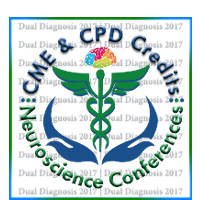
Xavier F Figueroa
Pontifical Catholic University of Chile, Chile
Title: Nitric oxide-dependent S-nitrosylation of Ca2+ homeostasis modulator 1 (CALHM1) channels coordinates neurovascular coupling through the control of astrocytic Ca2+ signaling
Biography
Biography: Xavier F Figueroa
Abstract
Neuronal activity depends on the fine and timely regulation of cerebral blood flow by a mechanism known as neurovascular coupling. Neurotransmitters released during an increase in synaptic activity (e.g. glutamate) activate receptors in astrocytes located between neurons and parenchymal arterioles, which initiates a Ca2+ signaling that is propagated to the astrocytic-endfeet and
evokes the release of vasodilator factors, leading to an increase in local blood flow. This process is coordinated among neighboring astrocytes, mainly, through gap junctions and ATP release via hemichannels. It has been proposed that release of NO, a potent vasodilator, from neurons, during an increase in synaptic activity, may be involved in neurovascular coupling. However, astrocytes express the Ca2+-dependent NO-synthetizing enzymes eNOS and nNOS and NO may be involved in the control of Ca2+ signals by direct S-nitrosylation of Ca2+ permeable channels such as connexins-based gap junction channels and hemichannels or pannexinformed channels. Then, the participation of NO in the neurovascular coupling initated by metabotropic glutamate receptor (mGluR) stimulation was assessed in primary cultures of astrocytes and rat brain slices. NO production, vasomotor response of brain cortex arterioles, changes in [Ca2+]i and ATP release were evaluated. In addition, the activity of connexin hemichannels, pannexin channels and Ca2+ homeostasis modulator 1 (CALHM1) channels was also analyzed. Interestingly, the results indicate that NO and CALHM1 channels play an essential role in the astrocyte signaling that mediates neurovascular coupling. Stimulation of astrocytes mGluRs leads to NO-mediated activation of CALHM1 channels by S-nitrosylation, which evokes ATP release. The subsequent ATP-dependent purinergic receptor stimulation induces the opening of Cx43 hemichannels and Panx-1 channels, which contributes to the astrocytic Ca2+ signaling. These findings may provide clues to the design of new therapeutic strategies for the treatment of neurodegenerative diseases.

